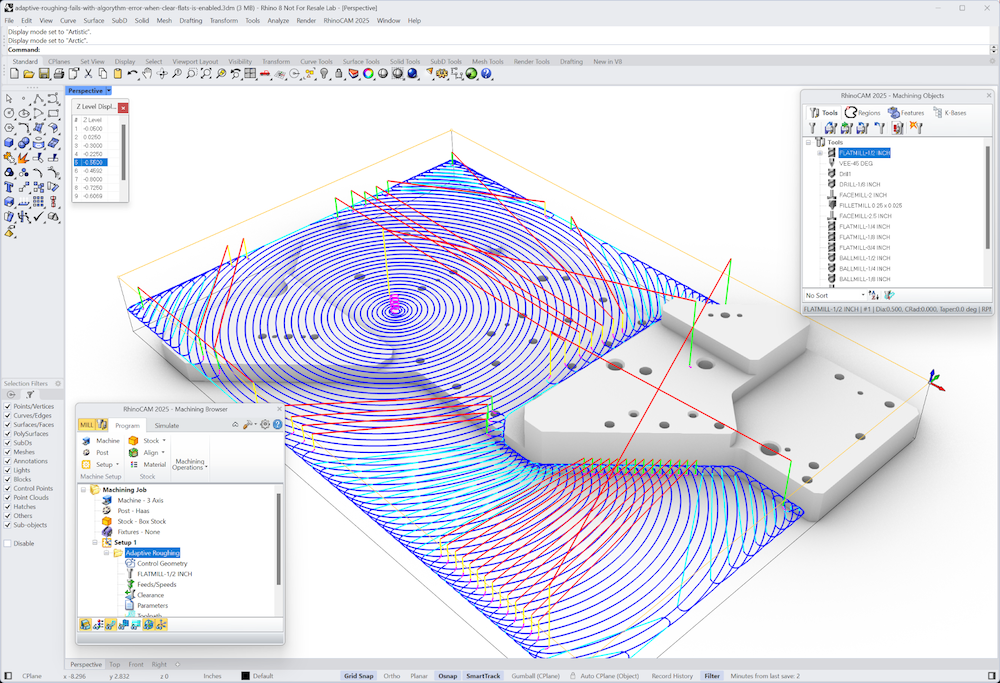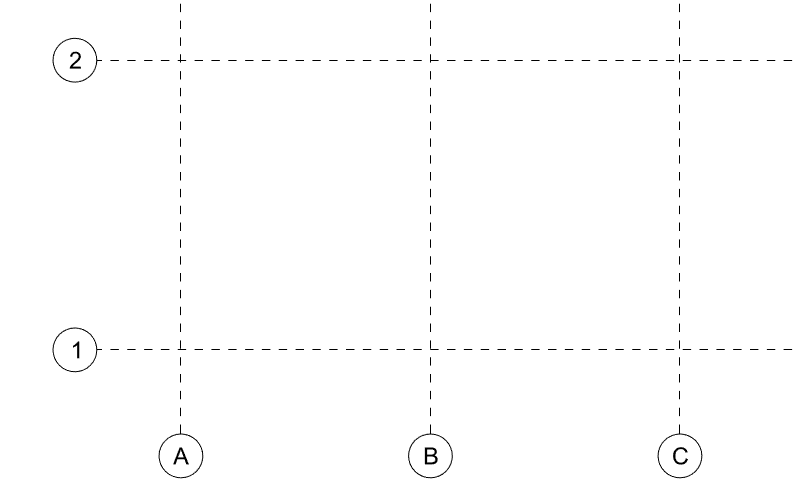Your Cart is Empty
"Great customer service. The folks at Novedge were super helpful in navigating a somewhat complicated order including software upgrades and serial numbers in various stages of inactivity. They were friendly and helpful throughout the process.."
Ruben Ruckmark
"Quick & very helpful. We have been using Novedge for years and are very happy with their quick service when we need to make a purchase and excellent support resolving any issues."
Will Woodson
"Scott is the best. He reminds me about subscriptions dates, guides me in the correct direction for updates. He always responds promptly to me. He is literally the reason I continue to work with Novedge and will do so in the future."
Edward Mchugh
"Calvin Lok is “the man”. After my purchase of Sketchup 2021, he called me and provided step-by-step instructions to ease me through difficulties I was having with the setup of my new software."
Mike Borzage
December 16, 2008 9 min read

It is difficult for me to write an introduction for Al Dean. On one hand I have read several articles and blog posts by Al, but on the other hand I've never had the opportunity to meet him personally (this interview was done by e-mail). What I like the most about Al and what keeps me going back to his blog is his frank attitude in expressing his opinions in a clear and honest way. This is a refreshing stance in a press world where the usual concern is more toward pleasing advertisers rather than informing readers. Al's rebellious attitude gives him credibility and makes his magazine not only a source of great information (professionally organized and beautifully formatted), but also a trusted one. On behalf of the CAD community I want to thank Al for his courage and determination in starting a new CAD magazine at a time when so many publications are simply disappearing.
Al, can you tell us a bit about yourself and your professional activities?
Sure. I’m co-founder and editor of DEVELOP3D, it’s a web-site and a print magazine. As for background, how far back do you want to go? I’m British, grew up in a city called Wolverhampton; it has that multi-cultural, working class, post industrial kind of thing going on. Lots of burnt out factories, machine shops – it used to be the lock and motorcycle making capital of England, but as is inevitable, that all disappeared. Over the years I’ve been a barman and bouncer, butcher’s assistant, worked as a roofer on heritage buildings and for three hellish summer months spent 12 hours a day in a refrigerated chicken processing factory. That taught me four things. Firstly, never to put my fingers in a machine I didn’t understand. Secondly, how to sharpen a machete. Thirdly, that I can never face KFC again. Lastly, that I really didn’t want to wear white wellington boots and thermal underwear to work for the rest of my life.
[At MCAD] I got the job because I was under 40 and used more than AutoCAD
I trained in product design in the early 90s just as CAD was getting into the university mainstream, got myself a master’s degree and at the same time worked a lot of very short term contracts as a Pro/E monkey. After one memorable three-week period designing fridge handles, I decided enough was enough and applied for a CAD reviewer job atComputer Aided Draughting and Design magazine, which eventually become MCAD. I’m told I got the job because I was under 40 and used more than AutoCAD. I gave up wearing ties and haven’t looked back since.
At a time when many newspapers and magazines are switching to online editions only, you decided to start a new printed magazine. What were the reasons behind this initiative? Was there any overconfidence on your part or just faith in the destiny of your new, serious, professionally-written magazine?
Two things Franco. Firstly, look at the newsstand. What do you see? A lot of magazines. People love them. I know the future is the web, but until there’s a compelling method of reading them without lugging a laptop around, then people are going to continue to love magazines. Let’s be clear, this is about hardware, not delivery. Until you get a device that’s as easy to roll up, pop into a bag or just have lying around, magazines are liked and loved. I love my MacBook, but I’m never going into the restrooms with it and I suspect that most people are the same.
Now, does that extend into trade publications? Do people love magazines still? Yes, I believe they do – but not the run of the mill magazine that flick through and bin on a monthly cycle. The vast majority of publishers these days are lazy. They spend little effort on the look and feel and yes, content of their publications. They are typically defocused and badly designed. It’s a stream of revenue that they’ll run into the floor until they give up or the market gives up on them. This isn’t a reflection on the editors, but the powers above them – unless you have a passion for a subject, you don’t really care and you don’t really understand your community.
[…] to give those involved in design, product development and manufacturing, quality content and to engage with them
The concept behind launching DEVELOP3D was to give those involved in design, product development and manufacturing, quality content and to engage with them. You can write the best content in the world, but if it’s not laid out in an eye catching manner, in a visually compelling style, then no-one is going to read it.
Was there overconfidence? Sure. I have the luck to work with the most talented guys in this field and we freelance out to others that have incredible skills (josh @ solidsmack.com for one). We did a lot of research, and had a pretty good idea of what people like. What surprised me was exactly how much people liked the first six months. It’s nice to get that feedback and validation. We’re not stopping and have to continually evolve what we do – that’s the problem that many publishers face; same old shit, month in, month out – it doesn’t cut it. You have to change your game and realize that print is still incredibly viral. I’ve been giving out copies of DEVELOP3D wherever I can and the thing that I notice is how people interact with it, feel it, turn it in their hands and flip through it – then read it, cover to cover. When you hand someone a magazine and the first thing they do is flip it open and smell it, you know you’ve got something right.
Looking at DEVELOP3D, I see a great integration between online and offline content. Can you share some insights about your holistic approach as a publisher?
Content is king. But the online and offline world are different. Online (blogging if you have to use that word) is about speed, reaction and grabbing people’s attention. It’s quick, fast and dirty.
Content is king. But the online and offline world are different.
With print, you have more time, you can create a more interesting story, you can do things with design, with graphics that help to enrich that story – whether that’s a user story, about how they develop products at Lego, or Nokia, or whether it’s a product review. Would I run a story that’s written for a blog in print? Probably not, but with the comments you get, the feedback you receive, you can adapt and refine it and ensure that you do the story justice.
What is in your opinion the impact of social media on CAD users? Are engineers reading blogs and following Twitter discussions?
Are engineers and designers reading blogs and such? Yes. Of course, they are. But are they engaging and interacting with them? No – absolutely not. Not to any great extent. As for twitter, there’s a handful.
[in the Social Media] there’s a very small core number of users that are involved, the alpha geeks
If you look at the CAD/3D modeling within the design and engineering community, there’s a very small core number of users that are involved, the alpha geeks if you like. These are the same people that comment on each other’s blogs, write their own and generate the interlinking that makes the whole thing work. It seems a lot bigger than it really is, in comparison to the size of the user community as a whole. It’ll grow I’m sure and more rapidly than we probably expect, but at present, it’s a small percentage.
British magazines in several technical fields have a good reputation and are widely read in the US. Do you have plans to move to the US with the printed copy of Develop3D?
In an ideal world, we’d be there now, and we certainly plan to be there soon. We’ve been seeding a few places with the magazine to try and gauge what people think of it. The reaction has been good, solid and encouraging. But comparing the US to the UK, it’s a nightmare: logistically and financially. Mail costs outweigh the cost of printing the magazine to a good, solid standard. A lot of US magazines use much lower weight paper and feel pretty nasty (for good reason, it’s cheaper to mail) – we don’t want to compromise on quality – the audience we’re talking to deserve a good, solid and quality magazine.
[…] the interest is not just North American, it’s global. At the moment, the rest of world equals that of the US.
So, we’re stuck in the position that people like the magazine, we want to get it there, but we simply don’t have a way of funding it – unless people pay for the magazine, which is something we’re looking into. But one thing’s for sure,everyone will always have the PDF version.
What else is interesting is that the interest is not just North American, it’s global. At the moment, the rest of world equals that of the US. Considering that the magazine is English, this surprised the crap out of me. I love the idea that every month there are nine people in Lima in Peru, digging into Develop3D with their coffee in the morning.
As a journalist you have a view on the market that is perhaps wider than the rest of us. Looking back on 2008 what will be remembered as the most emblematic event or technology?
Do you mean for the CAD world or the world at large? For the world at large, I think the social media thing is endlessly fascinating – that’s perhaps the biggest revolution there’s been in decades, since the advent of email. Perhaps it’s even the year that email became secondary (personally, I hate it and its rigid structured ways). There’s also multi-touch. The iPod touch and iPhone aren’t the beginning and end of this but they herald a new way to interact with data and UI.
On that subject I think we need a massive shift in interaction hardware before it gets adopted for 3D CAD. For visualization and presentation, it’s perfect, immersive and interactive, but imagine using a multi-touch interface, however it’s configured, for 12 hours a day. Arm’s up, blood flow to your elbows. It’s a recipe for RSI. That’s something I can’t quite figure out – how it’ll work.
What will 2008 be remembered for? That’s got to be the rise of the dynamics, direct modeling technology
But what will 2008 be remembered for? That’s got to be the rise of the dynamics, direct modeling technology. Products like IronCAD, CoCreate and Kubotek have been around for many years, but with the introduction of Synchronous Technology from Siemens, SpaceClaim and now Autodesk with Inventor Fusion, then this is the year that things got really serious. Is it marketing hype? A little bit – most of the new generation of tools are highly embryonic, but it’s coming and coming soon. I think CAD just took the next leap – we’re just not too sure where it’s going to land and how well it’ll recover from the impact. But we’ve got consumer driven graphics hardware advancing, CPUs are going multi-core at a quick rate and with the code base change to accommodate these changes, we have the potential to see drastically improved usability and capability.
As a CAD user, what kinds of limitations of current systems do you have a hard time accepting or understanding?
Data exchange is the age old one that isn’t going away. Aside from the simple mismatch of maths and geometry and there’s a huge desire NOT to make it happen which means it won’t be cured soon. The idea that the rise of direct/dynamic modeling systems will change this is interesting. The ability to edit geometry between systems, because you don’t need the history/parameters and can create them on the fly is valid, but experience tells me, it’s not that simple. When you have two core solid modeling libraries that define something as simple as a cylindrical hole differently, then there’s a lot of work yet to do.
The speed at which UI trends change is incredible, and today, it’s driven by consumers to such a large extent that CAD vendors can get caught out
Ease of use and interaction design is something I’m endlessly fascinated by. How different developers work, what appears to be a good idea in one system, gets clunky in another. How good ideas proliferate – and bad ideas. The speed at which UI trends change is incredible, and today, it’s driven by consumers to such a large extent that CAD vendors can get caught out. There was a perfect example recently. A CAD vendor developed a web-based front end to a data management product that looked like MySpace. If they’d looked this year and last year it’s all been Facebook or more recently, Twitter. The product should have matched that. CAD vendors need to look around more regularly to get a feel for what’s happening and where the trends lie, otherwise they end up looking like dinosaurs.
For someone with a background in the conceptual side of things, the last one is that there’s a lack of decent 3D conceptualization tools out there. Something that builds in sketching and 3D. Autodesk is working on something – Alias has always been strong in that area, but I think other vendors could do a much better job. Design always started with a sketch, be that a digital one or an analogue, sharpie on a napkin type of thing. That gets forgotten. Same with model making – with the rise of rapid prototyping (something of which I’m a huge fan), the manual element is being forgotten and from that tactile input, that manual process, we can gain so much.
I would like to thank Al Dean for taking the time to answer my questions. If you have any questions for Al or for Novedge, please leave a comment below and we will be glad to answer. You can also follow Al on Twitter where he is twitting as alistradean.
Franco Folini

March 08, 2025 5 min read
Read More
January 30, 2025 5 min read
Read More
January 28, 2025 7 min read
Read MoreSign up to get the latest on sales, new releases and more …